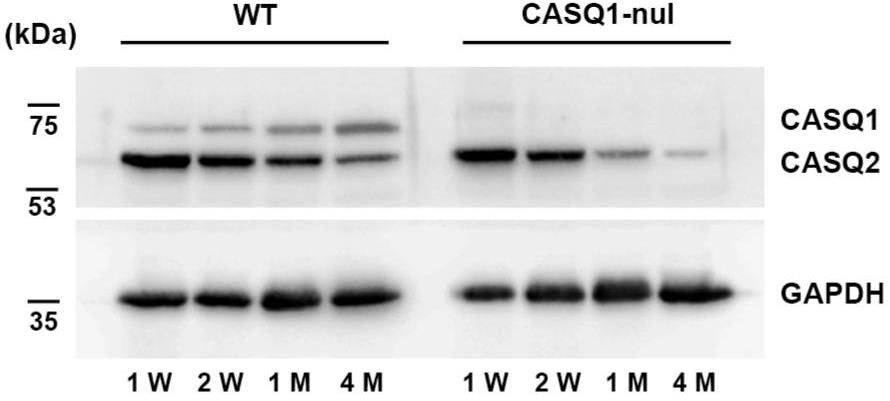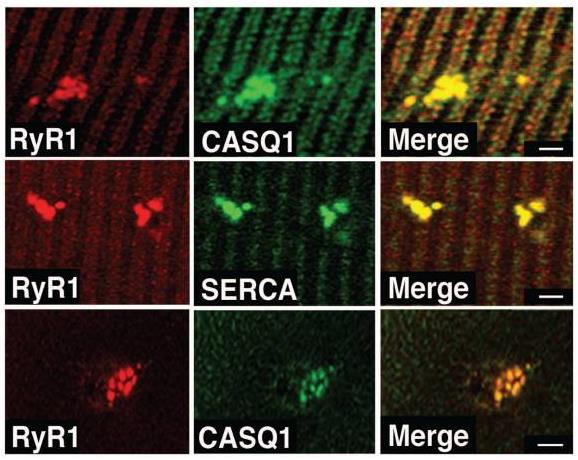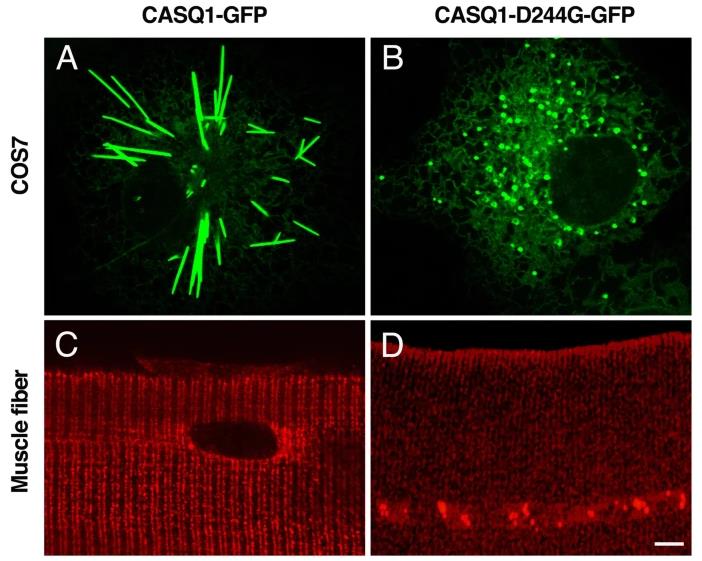Recombinant Human CASQ1 protein(Gln35-Asp396)
| Cat.No. : | CASQ1-511H |
| Product Overview : | Recombinant Human CASQ1 (P31415) (Gln35-Asp396) was expressed in E. coli with a N-terminal Met. |
- Specification
- Gene Information
- Related Products
- Case Study
- Application
- Download
| Species : | Human |
| Source : | E.coli |
| Tag : | Non |
| Protein Length : | Gln35-Asp396 |
| Form : | Lyophilized from sterile 50mM Tris, 10% glycerol, pH 7.5. Normally 5 % - 8 % trehalose, mannitol and 0.01% Tween80 are added as protectants before lyophilization. |
| Molecular Mass : | The recombinant human CASQ1 consists of 363 amino acids and predicts a molecular mass of 41.8 KDa. It migrates as an approximately 52 KDa band in SDS-PAGE under reducing conditions. |
| Purity : | > 80 % as determined by SDS-PAGE |
| Storage : | Samples are stable for up to twelve months from date of receipt at -20°C to -80°C. Store it under sterile conditions at -20°C to -80°C. It is recommended that the protein be aliquoted for optimal storage. Avoid repeated freeze-thaw cycles. |
| Reconstitution : | It is recommended that sterile water be added to the vial to prepare a stock solution of 0.2 ug/ul. Centrifuge the vial at 4°C before opening to recover the entire contents. |
| Gene Name | CASQ1 calsequestrin 1 (fast-twitch, skeletal muscle) [ Homo sapiens ] |
| Official Symbol | CASQ1 |
| Synonyms | CASQ1; calsequestrin 1 (fast-twitch, skeletal muscle); CASQ; calsequestrin-1; calmitine; calsequestrin 1; fast twitch; skeletal muscle; PDIB1; calmitin; calsequestrin, skeletal muscle isoform; |
| Gene ID | 844 |
| mRNA Refseq | NM_001231 |
| Protein Refseq | NP_001222 |
| MIM | 114250 |
| UniProt ID | P31415 |
| ◆ Recombinant Proteins | ||
| CASQ1-185H | Recombinant Human calsequestrin 1 Protein, Tag Free | +Inquiry |
| CASQ1-3138H | Recombinant Human CASQ1 protein, His-tagged | +Inquiry |
| CASQ1-1708HFL | Recombinant Full Length Human CASQ1 Protein, C-Flag-tagged | +Inquiry |
| CASQ1-2749HF | Recombinant Full Length Human CASQ1 Protein, GST-tagged | +Inquiry |
| CASQ1-5887H | Recombinant Human CASQ1 Protein, Myc/DDK-tagged, C13 and N15-labeled | +Inquiry |
| ◆ Cell & Tissue Lysates | ||
| CASQ1-7827HCL | Recombinant Human CASQ1 293 Cell Lysate | +Inquiry |
Case 1: Murzilli S, et al. Biology (Basel). 2023
The interaction between T-tubule and sarcoplasmic reticulum (SR) membranes is vital for muscle fibers. In CASQ1-knockout mice, these fibers show major structural changes at T-tubule/SR junctions. This study highlights that CASQ1 is crucial for the maturation of calcium release units (CRUs) in muscle development. Without CASQ1, despite correct localization of key proteins, CRU development lags, and the expression of proteins essential for T-tubule structure is delayed. Consequently, CASQ1 absence disrupts the proper assembly and organization of these critical muscle components.

Fig1. Representative immunoblot of the expression levels of CASQ1, CASQ2, and GAPDH at different ages in EDL muscle.

Fig2. Peripheral couplings in WT muscle (at 1 week of age) and in CASQ1-null fibers (at 4 months of age).
Case 2: Rossi D, et al. Hum Mutat. 2014
A missense mutation in the calsequestrin-1 gene (CASQ1), specifically changing aspartic acid at position 244 to glycine, was identified in patients with muscle weakness and fatigue. This mutation affects a key calcium-binding spot in CASQ1, altering calcium release in muscle fibers. When expressed in cells, the mutant CASQ1 showed a reduced ability to form polymers and promoted the formation of abnormal SR vacuoles seen in patient muscle biopsies. These findings suggest this single mutation in CASQ1 leads to abnormal protein aggregation in the sarcoplasmic reticulum, disrupting calcium release and contributing to the symptoms in patients.

Fig1. Morphological characterization of skeletal muscle fibers from patients.

Fig2. EM analysis of CASQ1WT and CASQ1MUT in mouse FDB fibers.

Fig1. Expression and localization of wild type and D244G CASQ1 in COS7 cells and in adult muscle fibers. (Daniela Rossi, 2021)
Not For Human Consumption!
Inquiry
- Reviews
- Q&As
Ask a Question for All CASQ1 Products
Required fields are marked with *
My Review for All CASQ1 Products
Required fields are marked with *
Inquiry Basket


